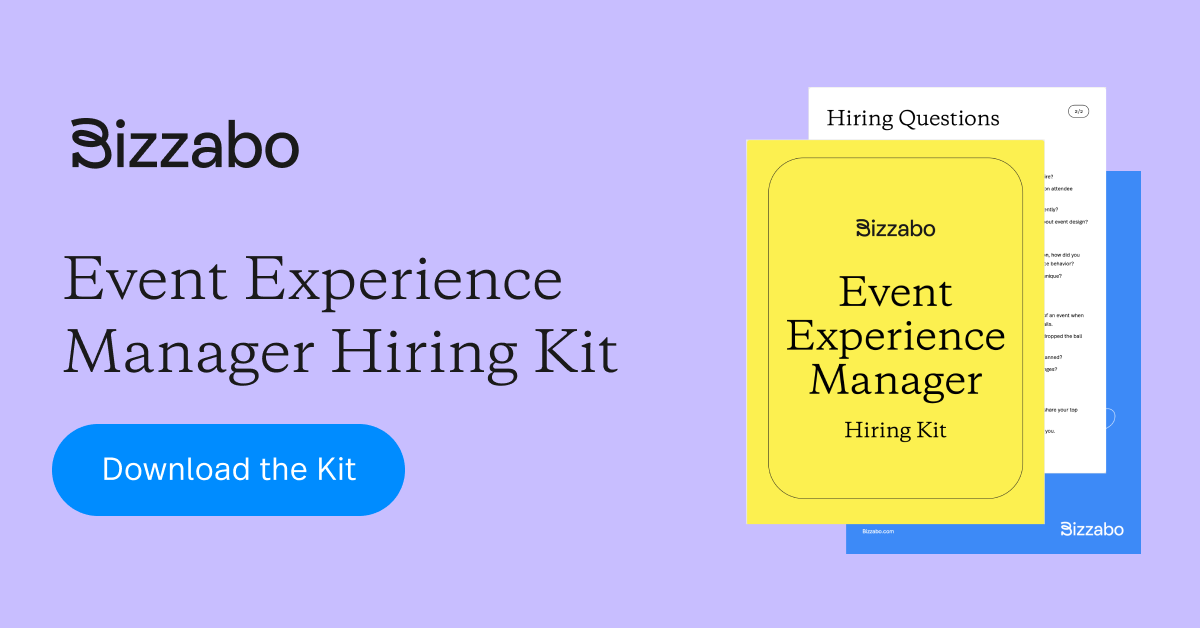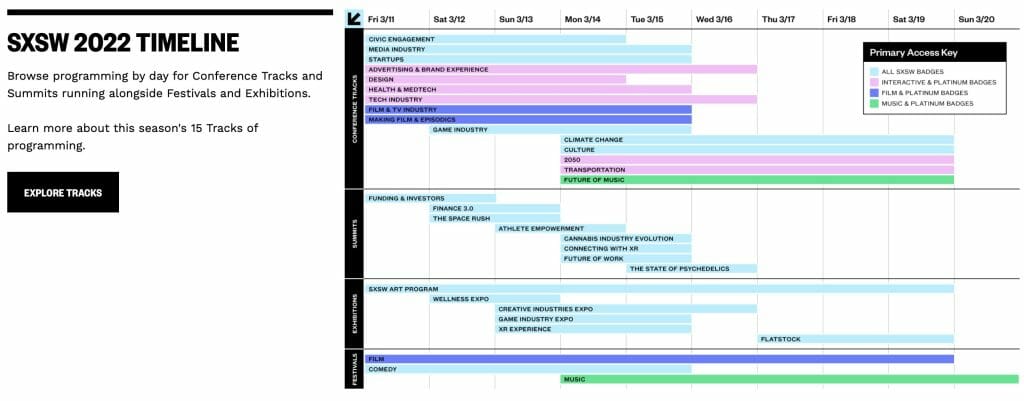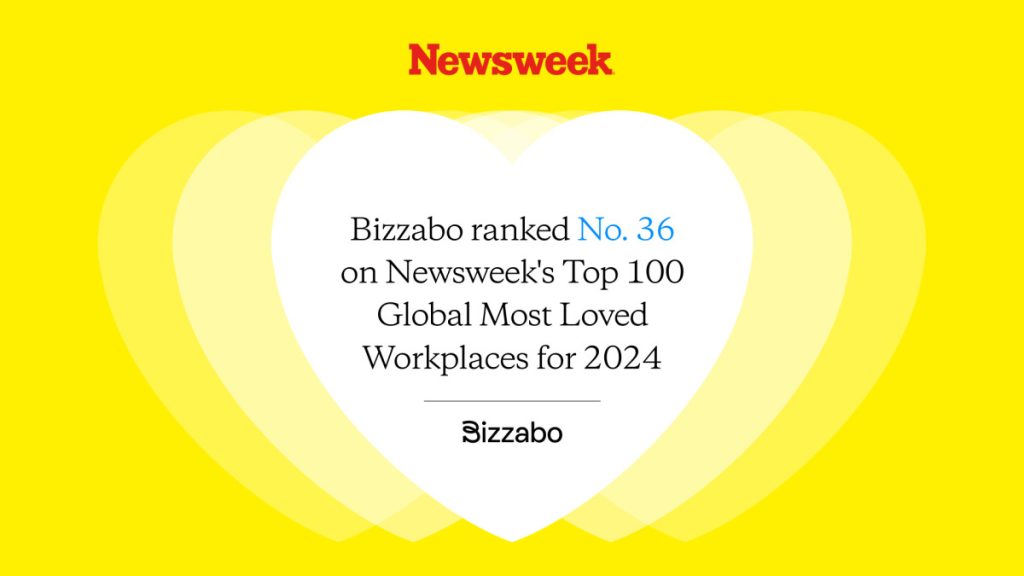What Is Event Experience? Everything You Need To Know


Giving every attendee a memorable, meaningful event experience is one of the best ways to engage — and delight — any prospect, partner, or customer. But what is event experience? And how do you make it happen?
Events offer a unique way to drive revenue, build your brand, and grow your community. But as every event organizer knows too well, putting on a successful event is a complex undertaking. To get the results you want, you need to manage dozens of moving parts and hundreds of granular details.
As the events industry continues to evolve, it’s more critical than ever for Event Experience Leaders to master the art of delivering unique experiences across event types, sizes, formats, geographies, and more. Consider this: In Q4 2021, 75% of events on Bizzabo’s platform were virtual but, as of publishing, only 30.6% of Q2 2022 events will be virtual.
On the flip, in Q4 2021, a mere 16.8% of events were in-person, and in Q2 of 2022, 48.5% of events are scheduled to be in-person. Additionally, 20.9% will be hybrid versus a mere 8.10% in Q4 2021.
So how do you deliver meaningful, equitable event experiences that bring audiences together? Let’s explore.
Understanding What Event Experience Is
What is event experience? Event experience refers to how attendees perceive and engage with your event — no matter the format or the type of event — and includes, but is not limited to, how participants feel about the following:
- Registration and ticketing
- Event content
- Speakers, moderators, and emcees
- Entertainment and food
- Networking opportunities
- Engagement opportunities
- Vendors, partners, and exhibitors
Although event professionals have traditionally poured energy into merely managing events, today’s event leaders are shifting their focus to optimizing events by personalizing the attendee experience. Thanks to the rise of purpose-built, future-proof event management platforms — like Bizzabo’s Event Experience Operating System — crafting meaningful experiences has become essential to every step of the event planning process, from ideation to execution to evaluation.
When event leaders move beyond event management toward event experience, anything is possible. Here’s what an event experience mentality can help you do:
- Let attendees feel delighted by moving fluidly between virtual and physical experiences.
- Avoid attendees feeling sidelined by technology, geography, socioeconomic status, ability, or another factor.
- Feel empowered to orchestrate events and create moments that serve each individual’s unique needs and expectations.
- Gain greater visibility into and transparency around ROI and Return on Event (ROE).
Why Event Experience Matters More Than Ever
The COVID-19 pandemic forced the events industry to go virtual and hybrid, and that shift doesn’t appear to be going away any time soon, even as the pandemic’s impacts continue to fade. According to our Evolution of Events Report, 97% of marketers believe that we’ll see more hybrid events going forward.
The benefits of hybrid and virtual events abound, enabling businesses to reach a larger audience, champion accessibility, save money, and reduce environmental impact. In fact, Drift found that without obstacles like time zones and travel, virtual attendees actually attend more events and more sessions than their in-person counterparts.
Over the past two years, event organizers have become creative about crafting meaningful virtual event experiences, from sending out swag boxes before the event starts to creating meaningful networking opportunities.
But as the number of in-person and hybrid events rapidly increases, event professionals are faced with how to bridge the gap between the virtual experience and the in-person experience. Today, event leaders must learn how to deliver unique and comparable event experiences for every attendee, whether they’re in person or virtual.

How To Balance Virtual and In-Person Event Experiences
Delivering high-impact event experiences starts with accepting that the virtual and in-person experiences are different and understanding attendee expectations. Creating equitable event experiences that cater to both audiences is a great way to ensure your events deliver positive outcomes.
Note we said equitable — not equal. Virtual and in-person attendees can’t have a copy-paste experience, no matter how much you want them to. Also, each audience likely comes to your event wanting something different.
For example, we found that learning is the primary motivator of virtual attendees and that in-person attendees are 3X as likely to be interested in networking and meeting people than virtual attendees (24% vs. 7.7%).
This is why hybrid events unlock so many doors of event experience. A successful hybrid event gives attendees choice and flexibility of participating in their preferred format while also delivering the best possible experience for each person.
One of the most important things Event Experience Leaders can do is create comparable, equitable experiences that give each audience what they need and want how they need and want it. But you also have to integrate your virtual and in-person experiences, so the two audiences don’t forget the other exists.
For example, your in-person event will likely have many brand activation opportunities, such as catered food trucks, celebrity meet-and-greets with handshakes and hugs, or other tactile experiences. Although you can create an equitable experience for your virtual attendees — a gift card to Uber Eats and a virtual meet-and-greet — the experience will never be a copy-paste one.
Even still, there are options for equitable event experiences. For example:
- Create 1:1 networking opportunities between your in-person and virtual audiences
- Offer breakout sessions that include both audiences
- Feature virtual and in-person speakers
3 Tips for Event Experience Leaders
We’re living in a hyper-personalized world. Amazon tells us exactly what we want to order long before we know we need it, and we’re fed ads on social media that somehow know we’re looking for a new blender before we’ve even searched Google.
It comes as no surprise, then, that 90% of event marketers agree events should deliver more personalized experiences to attendees. Here are three tips to make customized experiences happen:
1. Invest in Event Experience Technology
Delivering unique event experiences starts with technology. With the right event management platform in place, it’s possible to manage experiences from the moment attendee lands on your event site through a post-event survey to gauge their feelings.
For example, Bizzabo’s Event Experience OS is tailormade for event professionals by event professionals. It’s a flexible and future-proof platform designed to respond to the industry’s ever-changing needs. It can also connect to the tools and tech your team uses every day.
An event experience platform empowers Event Experience Leaders to produce in-person, virtual, or hybrid events with immersive experiences with flexibility and at scale — regardless of size, type, or format.
2. Create Personalized Paths for Each Persona
With the right event management platform in place, it’s possible to create personalized journeys or tracks for every audience segment. Once an attendee registers, you can automatically prompt them to share information about their preferences and then show them relevant networking opportunities, educational sessions, and other engagement options tailored to their interests.
For example, SXSW 2022 offers 15 programming tracks broken down by badge priority (e.g., Interactive, Film, Music, and Convergence), such as Advertising & Brand Experience, Culture, Design, and Tech Industry.
By breaking down your audience into specific segments — executives, salespeople, marketers, sponsors, vendors, speakers, and more — you increase the likelihood that every attendee has a meaningful, memorable experience that sticks with them for days, weeks, and months to come.
3. Build and Foster Shared Experiences
Recall the last in-person event you attended. Do any of these experiences resonate?
- Experience 1: Remember that moment when that inspiring session wrapped up, and everyone stood up clapping and patting each other on the back? When everyone left the room abuzz with excitement about what they heard and felt and learned?
- Experience 2: Maybe you recall walking through the trade show hall and running into an old colleague. Did you shake hands? Share a hug? Maybe you grabbed a coffee and chatted for a few minutes between sessions. That feeling of spontaneous connection is one of the reasons why people love going to in-person events.
- Experience 3: Or perhaps it was when you went to a special event — a brand activation — and got to hold a new product in your hands. You got to feel the sleek materials, explore a new opportunity, and feel something new and different for the first time.
These feelings of connection, excitement, and tactile experiences are representative of the power of in-person events — and it’s possible to equitably recreate these high-energy experiences in a virtual space.
With the right technology, attendees can “step foot” inside a bespoke, immersive digital event venue. Virtual attendees can join live events, launch spontaneous virtual meetings with in-person or other virtual attendees, ask to join a speaker onstage, and more.

Moderators and speakers can also engage virtual attendees with quizzes and interactive Q&A, as well as breakout sessions and VIP opportunities. And yes, attendees can give speakers a virtual standing ovation alongside in-person attendees — recreating that truly incredible feeling that’s only possible from a shared experience.
Get Started: Build Event Experiences Into Your Next Event
Now that you have a better understanding of event experience and why it matters, you’re probably wondering how to put knowledge into practice. The best way to start is to hire an Event Experience Manager.
Download our free Event Experience Manager Hiring Kit, and get everything you need to recruit, interview, and hire an Event Experience Manager who can help take your event strategy to the next level.




